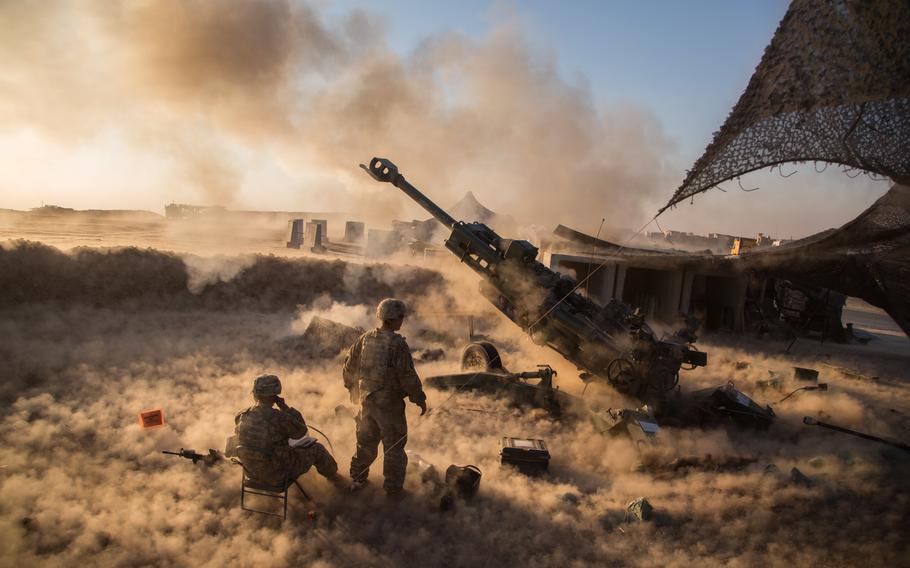
Soldiers with the 101st Airborne Division fire a M777 A2 Howitzer at Platoon Assembly Area 14, Iraq, Nov. 29, 2016. The Pentagon has introduced new safety measures aimed at protecting troops from brain injuries linked to blast exposure. (Christopher Brecht/U.S. Army)
The Defense Department has mandated new measures to protect troops from blasts produced by mortars and other weapons, amid growing evidence that links blast exposure to brain damage.
Under the new policy, new military recruits in all DOD services will start receiving baseline cognitive tests to make it easier to diagnose and treat traumatic brain injuries throughout their careers.
Troops also are being directed to stay as far away from blasts as possible during training and operations and to wear protective gear, according to a memo released Friday by Deputy Defense Secretary Kathleen Hicks that outlined the new measures.
The memo lists minimum standoff distances from blasts for instructors, safety officers and others involved in training. To help protect those operating the weapons, DOD is calling for more simulations to be integrated into training.
Short-term and repetitive exposure to the pressure caused by the shockwaves of some weapons — known as blast overpressure, or BOP — have been linked to negative effects on brain health and cognitive performance, ranging from headaches and decreased reaction time to attention difficulty and memory loss, Hicks said.
“Brain health effects from BOP exposure are not fully understood, but adverse health and cognitive performance impacts have been reported from acute exposures to BOP above 4 pounds per square inch,” Hicks said, adding that 4 psi would be used as a threshold to require protective measures until further research is conducted.
Weapons systems known to produce BOP exposures exceeding 4 psi include breaching charges, shoulder-fired weapons, .50-caliber rifles and guns, and indirect fire systems, including mortars and Howitzer platforms, according to DOD data.
Some of the recommended minimum stand-off distances mentioned in the memo include 16 feet for an M3 anti-armor and anti-personnel weapon system; 13 feet for an M120/121 120mm mortar; and 7 feet for MK15 and M107 sniper rifles.
The new measures come after a bill with bipartisan backing was introduced in the House in April to address growing concerns over blasts and brain injuries.
The Blast Overpressure Safety Act listed several solutions, including mandating regular cognitive assessments over a service member’s career. It’s been referred to the House Armed Services Committee but has yet to be passed.
“By improving care, mitigating exposure and providing greater transparency in our military’s equipment procurement process, we can protect the health of the brave men and women who serve our country,” Rep. Ro Khanna (D-Calif.), who sponsored the bill, said in April.
Khanna, who identifies as a progressive, introduced the bill along with Elise Stefanik, a Republican from New York who is close to former President Donald Trump.
Until now, DOD has conducted baseline cognitive testing for troops only before a deployment.
The new policy mandates baseline testing for anyone entering service after Dec. 31, with “high-risk” active-duty troops already serving to be tested by the end of next year and all remaining active-duty and reserve personnel — with the exception of Individual Ready Reserve members — to be tested as soon as possible.
The announcement comes nine months after Army reservist Robert Card went on a shooting spree in Maine, killing 18 people and wounding over a dozen more.
An autopsy shared by Card’s family found he likely suffered from traumatic brain injury.
Card had been a longtime instructor at an Army hand grenade training range and is believed to have been exposed to thousands of low-level blasts, according to doctors at Boston University, who conducted the autopsy.